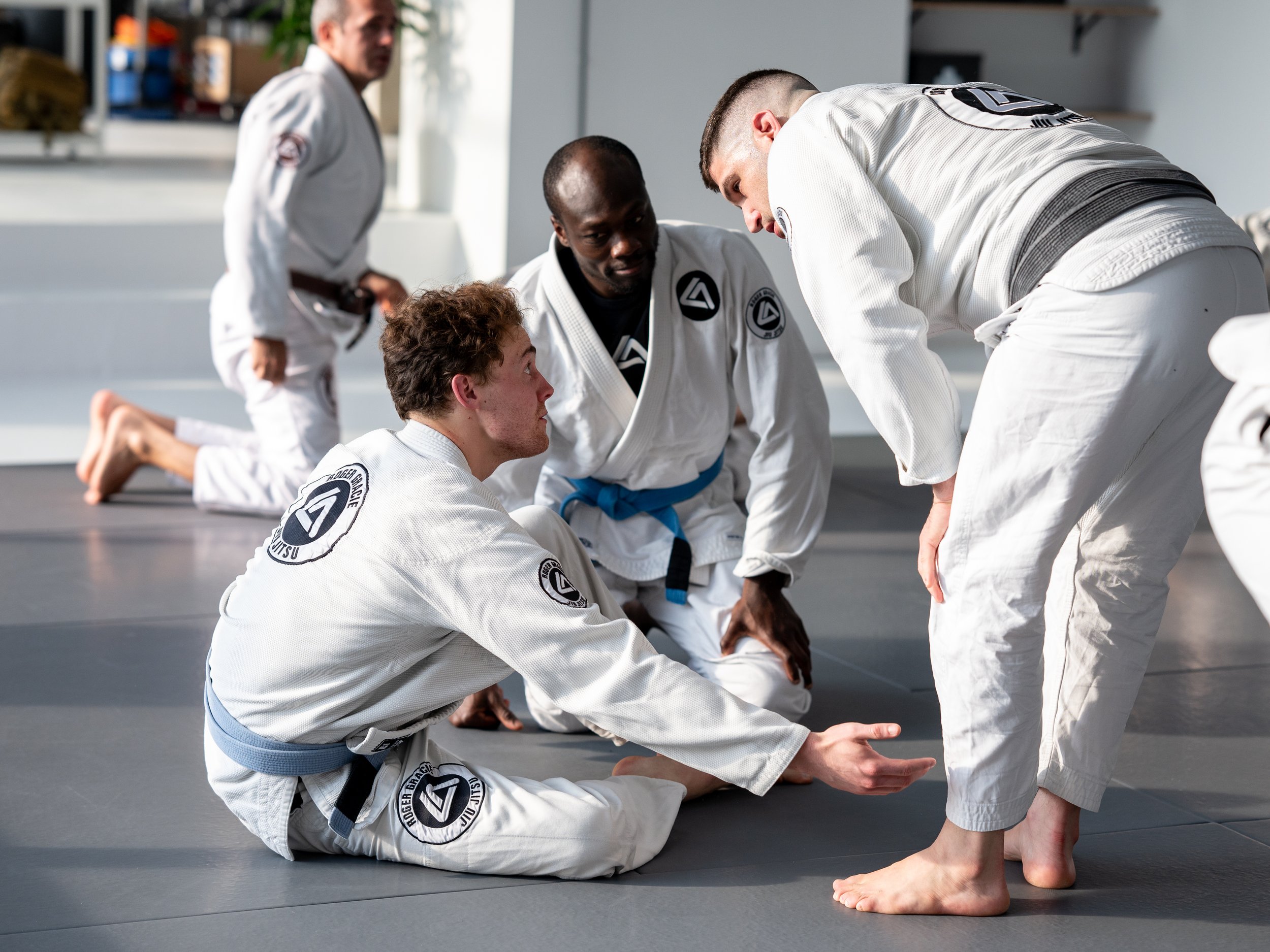
Jiu Jitsu
Jiu Jitsu is a martial art that puts emphasis on grappling and ground fighting
Its focus is to take a position that allows to get control of the fight, and eventually force an opponent to surrender by applying a joint lock or a chokehold
Among the main concepts is the use of leverage and weight distribution to be successful even against a bigger or stronger person
The rudiments of Jiu Jitsu are believed to have originated in India around 2000 BC when Buddhist monks, forbidden to use weapons but in the need to defend themselves from invaders and outlaws, came up with a self-defence system that allowed them to immobilize their adversaries without physically harming them.
Over the following centuries, this system was slowly assimilated by neighbouring countries, to arrive in China after the invasion of India and finally in Japan during the Shogunate period (17th century), where it was consolidated and developed into a national art. During these times, Jiu Jitsu was known as Yawara, Hakuda, Kogusoko and an assortment of other names. The history of the art during these time is uncertain because teachers tended to keep secrets about their art to give it a feeling of importance and often changed the stories around it to suit their needs. The art developed and gained further popularity after 1877, when an emperor decree forbid the practice of arts of combat that involved the use of arms or weapons.
At the end of the 19th century, masters of the art emigrated from Japan and one of them, Mitsuyo Esai Maeda, after travelling in Europe and Americas, arrived in Brazil in 1915 and later settled in Belém do Pará where he met and was aided by a man named Gastão Gracie, a Brazilian of Scottish descent. To show his gratitude, Maeda accepted Gastão’s frail fifteen-year son Carlos at his academy and, for the latter, an art where technique was above force and weight soon became not simply a fighting method but a passion and a tool for personal improvement.
In 1925, after gaining teaching and fighting experience and having proven the efficiency of the art by defeating physically stronger, Carlos opened in Rio de Janeiro the first school, known as the “Academia Gracie de Jiu-Jitsu”. Since then, Carlos started to share his knowledge with his younger brothers Osvaldo, Gastão, George and Helio, teaching his life philosophy, his principles of natural nutrition, and adapting and refining the techniques that he learned to the weaker characteristics of his family.
Testing Jiu Jitsu in competition and “vale tudo” fights gave Carlos and his brothers the opportunity to refine and improve the existing techniques. With the goal of proving Jiu Jitsu’s superiority over other martial arts, Carlos challenged the greatest fighters of his time and managed the fighting careers of his brothers. Because they were defeating much heavier opponents, the Gracies quickly gained recognition and prestige. Attracted to the new market, many Japanese practitioners came to Rio but none of them were able to establish a school as successful as the Gracies’, who had more sophisticated ground fighting and submission techniques. Carlos and his brothers’ readaptation of the techniques was such that it completely altered the complexion of the original Jiu Jitsu and their techniques were so distinctive to them that their art became known as “Gracie Jiu-Jitsu”.

